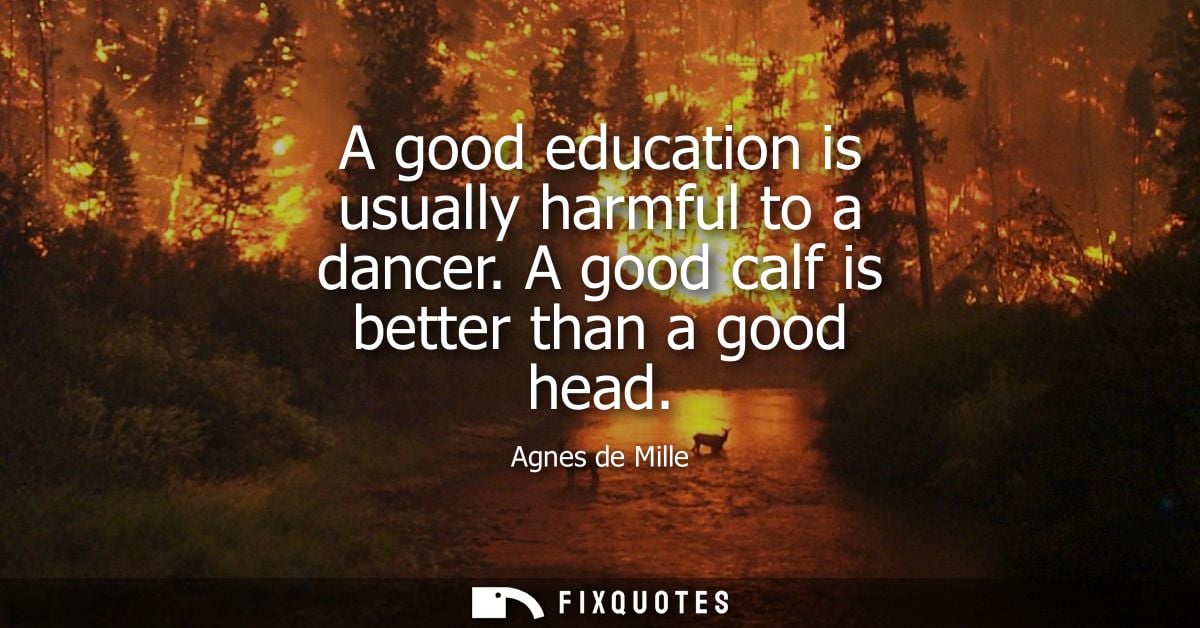"A good education is usually harmful to a dancer. A good calf is better than a good head"
About this Quote
Agnes de Mille’s observation provocatively challenges conventional wisdom about the value of formal education in the realm of dance. She suggests that intellectual achievement or extensive book learning may not only be unnecessary for dancers but could potentially hinder their progress or creative expression. De Mille, herself both an accomplished choreographer and a sharp thinker, draws a sharp distinction between the mind and the body, emphasizing the unique physical demands and priorities of dancers.
The reference to a “good calf” highlights the fundamental importance of the dancer’s body as their principal instrument. Strong, responsive muscles, particularly in the legs and calves, are essential for mastering technique, achieving grace, and expressing emotion through movement. Physical training, discipline, and bodily awareness forge the dancer's artistry in ways that mental training alone cannot. The value placed on physical capability isn’t intended as anti-intellectualism, but rather as a reminder that the art of dance is grounded, first and foremost, in bodily experience.
De Mille’s words also provoke thought about the potential downsides of intellectualization in dance. Overanalyzing movement, being overly self-critical, or seeking to rationalize every motion can paralyze a dancer, blocking intuition and interrupting the organic connection between sensation and expression. Furthermore, being steeped in theoretical or cerebral pursuits may lead to neglect of the relentless physical labor required to excel at dance.
By stating that a good education is “harmful,” de Mille invites readers to reflect on the divergent paths of intellect and embodiment. While intellectual pursuits have great value in many fields, dance demands a different form of knowledge: an intelligence of the body, cultivated through movement, repetition, and muscle memory. The implication is not to dismiss education entirely, but to recognize that the dancer’s greatest asset and focus should be the body’s strength, agility, and capacity for expressive movement.
More details
About the Author

